FeurerKrieg
Posts: 3397
Joined: 6/15/2005
From: Denver, CO
Status: offline

|
So this game is CHS scenario 160 on the extended map.
Game settings:
1 day turns
Weather ON
FOW ON
Allied sub doctrines ON
Jap sub doctrines ON
Set all facilities to expand at start OFF
Accept Reinforcements OFF
Variable reinforcements, +/- 15
The house rules are pretty long, and I'll post them below. The most interesting one (I think) is the atoll stacking limits. The general idea is to allow for a more 'realistic', although not necessarily historical game. So to simulate different prewar planning, etc, we still have surprise turned on, but we have a rule about how close Jap TF's can get to Allied to bases to prevent turn 1 capture of Pago Pago or some such nonsense. I've also scrapped all the R&D factories, and put some limits on the PDU so that I can still use good planes, and downgrade as needed for training, kamikazes, etc, but I can't make all DB and LB units into Helen's for example. Also listed what Allied units can upgrade to 4E's.
Shinano is available as Battleship or Carrier.
And I used the editor to activate the Russians so OSO can move them around and move the Soviet Navy as needed, however they can't attack unless my Machukuo AV's are less than 8000, which I'd tell him if that were the case.
House Rules:
quote:
CHS 160
Japan Specific
1. The KB may not hang around Pearl Harbor after 7 DEC 41. It may only conduct the 7 DEC 41 raid and must leave the area to a distance of not less than 30 hexes from Pearl Harbor and remain at least this distance from Pearl Harbor for a period of not less than one week. KB may moved NW, W, SW after Pearl Harbor.
2. Kwangtung army units may not leave Manchuria without spending PPs to do so.
3. No Kamikaze attacks above 28,000 ft to prevent ‘warping’ of Kamikaze fighters that are over Allied fighter ceilings.
4. If all Russian bases are captured, a garrison must be maintained at Russian map entry points to simulate defense from Russia reinforcements. Urumchi – 500 AV, Abakan – 2000 AV, Krasnoyarsh – 2000 AV.
5. If all Chinese bases are captured, a garrison of 4000 AV must be maintained at Chungking.
6. Japan may not attack Aden.
7. No garrison required at Karachi because British arrive at Aden. No garrison required in Indian bases because no in game units present from the Indian National Army.
8. Air units may not bomb unoccupied Allied bases repeatedly for training purposes. Two-four attack can be expected to determine that a base is unoccupied but after that attacks should cease. In China, the only fighters that may do ground attacks are those that are assigned to the China Command or Kwangtung Army. Only the ‘training’ command can be used to train.
9. Any air unit named as a ‘Training unit’ (ie ##th Training Sentai) may not be used in combat except for defensive CAP in Manchukuo or the Home Islands, or if they are converted to Kamikaze.
10. The construction of at least one of the two Shinano ships MUST always be halted. The Japanese player is only permitted to be building ONE of the ships at any time. The player may halt both ships if they wish, or switch construction between the two ships at any time as long as one of them always remains halted. If by some error BOTH Shinanos are launched, then BOTH must be scuttled immediately as soon as this is discovered by either player.
PDU Restrictions
11. Only Glen floatplanes on subs (and Glens on subs only). I-400 Subs can equip Seiran floatplanes.
12. Only ‘A’ series naval fighters/fighter-bombers on carriers, except the A6M3 which was not carrier capable due to its fixed wingtips (A6M3a is okay for carriers).
13. Japanese Dive Bomber units that upgrade to level bombers may only upgrade to the Lily/Randy path (Ki-48-I >> Ki-48-II >> Ki102b)
14. All air units attached to CL, CLAA, CA, and BB may only upgrade to Pete or Dave unless they enter as a Jake or Alf. AV, CS, and others may upgrade floatplanes to any class (except Glen/Seiran).
First turn Japanese & Allied restrictions
1. No attacks on Allied bases more than 10 hexes from a Japanese starting base. Additionally, no Japanese transport TF may end turn 1 less than 5 hexes from any Allied base more than 10 hexes from a Japanese base.
2. Only port attack allowed is Pearl Harbor or Manilla.
3. KB must either attack Pearl Harbor or Manilla or move to a major base – Truk, Palau, Saipan, Home Islands, Shanghai, Formosa, Saigon, or Haiphong. IE – KB may not hunt US carriers for the first two days.
4. Allies can only move those TF’s which are already formed. They may not form any new TFs.
5. No Allied port or airfield attacks on day 1.
6. Japanese R&D factories will be converted repeatedly on turn 1 so that the amount is 0. The Tojo RD factory will not be reduced. Also, any R&D factories that start at (9) or less will not be reduced. The large R&D Factories are not based on reality, but they are an AI crutch to assist with construction of late war planes. Japan will have to expend supply and manpower points to expand any production.
Allied Specific
1. LCUs and Air Groups under China Command may not leave the borders of China for any reason. Political Points may not be spent to change their command to circumvent this rule either. The only exception is the AVG Fighter Group as it starts in Burma and also spent most of it’s time fighting there. Note that there are several Chinese divisions that start the game under the Southeast command. This restriction does not apply to them.
2. No Corsair's allowed on US CV's until 1/44 except for air transport missions.
3. The 2nd Marine division may be divided on/after the first turn. One of the 3 groups created may deploy to the Central or South Pacific immediately. The other 2 groups created by dividing the parent unit and all other Division-sized Marine Corps LCUs must remain on the continental US until 1 JUN 42 or in the event that Port Moresby falls into Japanese hands whichever comes first. Historically, one brigade of the 2nd Marine division was deployed to Samoa on 24 DEC 41. The 1st Marine division invaded Guadalcanal on 7 AUG 42. The 1 JUN 42 date should be a sufficient restriction to prevent them from being able to stage a counterattack with Marines until roughly this date.
4. No withdrawal of Allied LCU's from Malaya, Phillipines, or Dutch East Indies until Singapore, Manila, Palembang, Batavia, or Soerabaja is under LCU attack. This applies separately for each area.
5. No Naval Attack by Allied land based bombers (2E bombers) under 1000', until 1/43.
6. 4E bombers may never attack below 9000’.
7. PT boats may not combine with other surface ships in a TF except to transfer to another base.
8. No more than 6 PT boats in a TF.
9. No more than 3 PT boat TF’s at the same port.
10. HMS Implacable’s fighters should remain Seafires, as Corsairs and Hellcats were too large to operate from this carrier.
11. All Australian nationality Brigade and Division LCUs are only allowed to move within Australia Proper and New Guinea (including New Britain but NOT Dutch New Guinea). The exception is all Australian LCUs of this size that are designated as AIF units, e.g. 9th Division AIF; the two AIF Brigades that start in Malaya. This restriction is permanent, even if the units are reassigned to a HQ other than ANZAC Command, and still applies even if a Division or Brigade is split into smaller units. There are no restrictions for Australian air units, other than the normal restrictions that apply to air units that are assigned to the ANZAC Command restricted HQ.
PDU Restrictions
1. No Allied two-engine bomber units may upgrade to four-engine units except for those units listed at the end of this rules list.
Both
1. Night Bombing: Aircraft groups not designated as night aircraft may only perform City Attack, Naval, Airfield, and Port Attack missions, versus Manpower only. No restrictions on night Naval Attacks.
2. Railroad Use: We got rid of this one.
3. Submarines: No submarine invasions.
4. Invasions: No invasions against hexes that do not contain a dot/base in them. Not every coastal hex was suitable for amphibious operations. Without this rule it is possible to use a couple of squads to disrupt the flow of supplies along coastlines.
5. Dividing Units: No breakdown of LCUs in combat to reduce fatigue and disruption. “In combat” is defined as sharing the same hex as an enemy LCU for this purpose.
6. Mine laying: Only mine laying classed ships may lay mines. This restriction doesn’t apply to submarines or aircraft. Also, only one Offensive Aircraft minelaying mission per turn until CAP vs Minelaying bug is fixes. Unlimited defensive air minelaying.
7. TF Rearming: No TF may re-arm in a port smaller than size 3 without a AE ship present (TF consisting of DD class ships only may use a AD type ship to fill this requirement). No capital ships may re-arm in a port smaller than size 3 without a AO/TK and a AE ship present. No forward base refueling of SS TF in ports under size 3 unless a AO/TK is present.
8. Naval Bombardments: No naval bombardments against hexes that contain "no" friendly LCUs. No fragmented LCUs may be used to satisfy this requirement. Naval bombardments "may" be conducted on pre-invasion sites up to two weeks prior to the actual landings. This rule is to deter the use of strategic naval bombardments. This puts a stop to the “gamey” rush-in-at-night-to-bombard-the-airbase-to-kill-the planes type attacks. Historically bombardments were always used to support an invasion or a battle in progress. The earliest preparation was conducted by the USA prior to the invasion of Guam and that was 13 days.
9. Aircraft Stacking: The maximum number of aircraft that can use an airbase is limited to 110 times the base size.
10. Fortifications: Maximum fortification on an atoll is limited to the airfield SBS + port SBS. For example Wotje is port 1 (1) and airfield 0 (1). The max fortifications would be 1+1 = 2. Note some Atolls will start with larger fortifications – these should not be increased.
11. Atoll
Defensive Stacking limits:
• Any combination of units up to 10,000 men per max fort level as above in LCUs may be stationed at an Atoll. Each vehicle (tank, engineering vehicle, etc) counts as 4 men. If an atoll starts with higher fort level, that will determine troops limits.
Offensive Stacking limits:
• Any combination of units up to 20,000 men per max fort level as above may be stacked at an Atoll. Each vehicle (tank, engineering vehicle, etc) counts as 4 men. If an atoll starts with higher fort level, that will determine troops limits.
If an atoll is attacked and taken then the new owner should attempt to get to the defensive stacking limit within 1 month.
12. Air Transport: Only planes designated as transport aircraft may airlift troops. Other aircraft allowed to transport troops by game mechanics are only permitted to do so when evacuating troops.
13. Paratroops: Air drop capable units must be ‘whole’ (ie no fragments on the map) before being dropped. Allied Paratroop divisions can be broken down into thirds and used separately, but each third must not have fragments on map when it is dropped.
14. Russian War Entry: At game start, Japan will move a unit to activate Russia, and then move back. Russia may not attack Japan until either 1) August 8, 1945 is reached, 2) Japan units cross Russian border or Japan units attack Russia units. (Japan’s responsibility to ensure naval air attack range is limited to prevent accidental attacks on Soviet navy. One attack should be considered ‘international incident’ and not declaration of war if agreed to by both players) or 3) Japan AV in Kwangtung goes below 8000. Japanese player must notify Allied player if this occurs. At that point Russian player may attack or not, but before any offensive action must declare war by notifying Japanese player. No Allied units may use Russian bases or move through Russian areas at any time, except Allied ships with float damage may enter Russia ports until float/fire is 0 then must leave.
15. Named Pilot Pool: This will not be used by either player as abuse can happen where highly experience float plane and bomber pilots can be instantly moved into fighter planes with no retraining period.
16. Sigint: Each player will only read their own SigInt file.
Allied units that upgrade to 4 engine bombers:
Bombardment groups
2nd 3rd 19th 21st 23rd 26th 27th 29th
31st 33rd 36th 38th 42nd 72nd 74th 98th
397th 406th 408th 431st
VB- groups
123 130 131 133 135 136 137 138 139 142
144 146 148 149 150 151 152 153
Others:
No.321 Squadron RAF
VP-2
_____________________________
|
 Printable Version
Printable Version




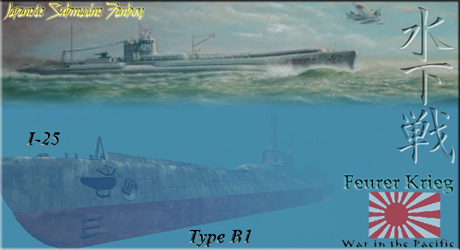

















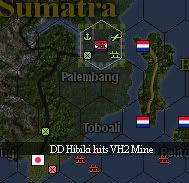
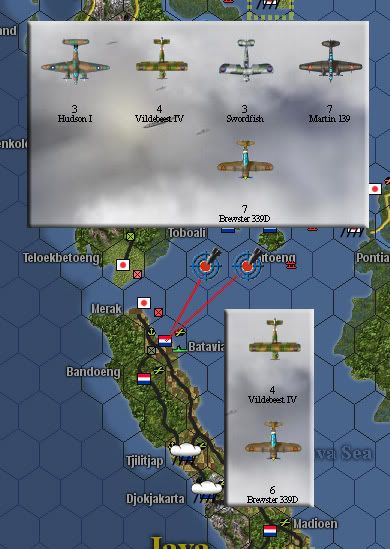


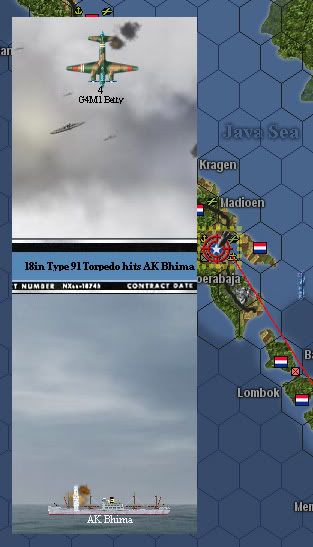
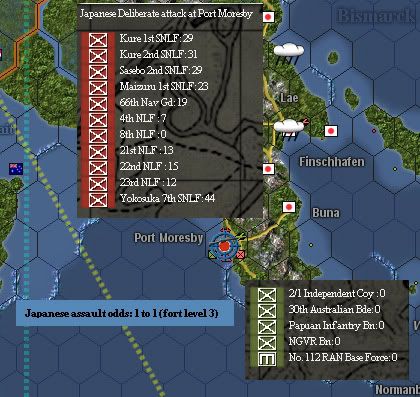
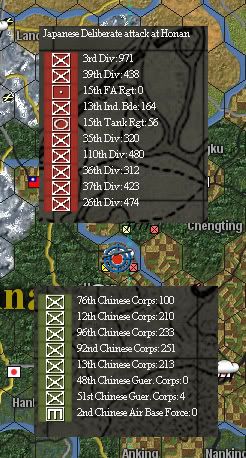


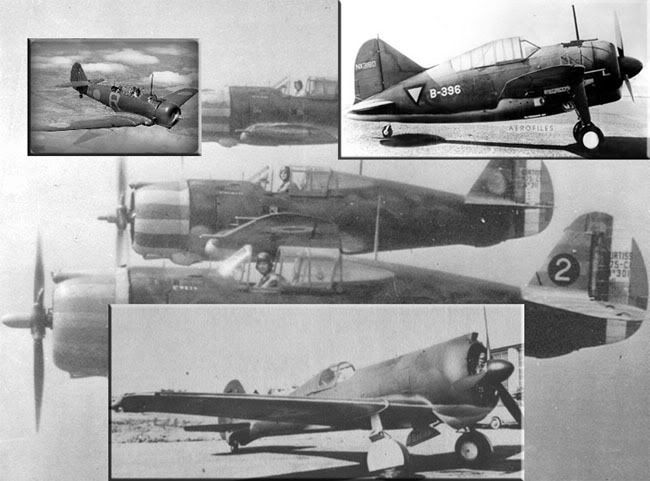
 New Messages
New Messages No New Messages
No New Messages Hot Topic w/ New Messages
Hot Topic w/ New Messages Hot Topic w/o New Messages
Hot Topic w/o New Messages Locked w/ New Messages
Locked w/ New Messages Locked w/o New Messages
Locked w/o New Messages Post New Thread
Post New Thread